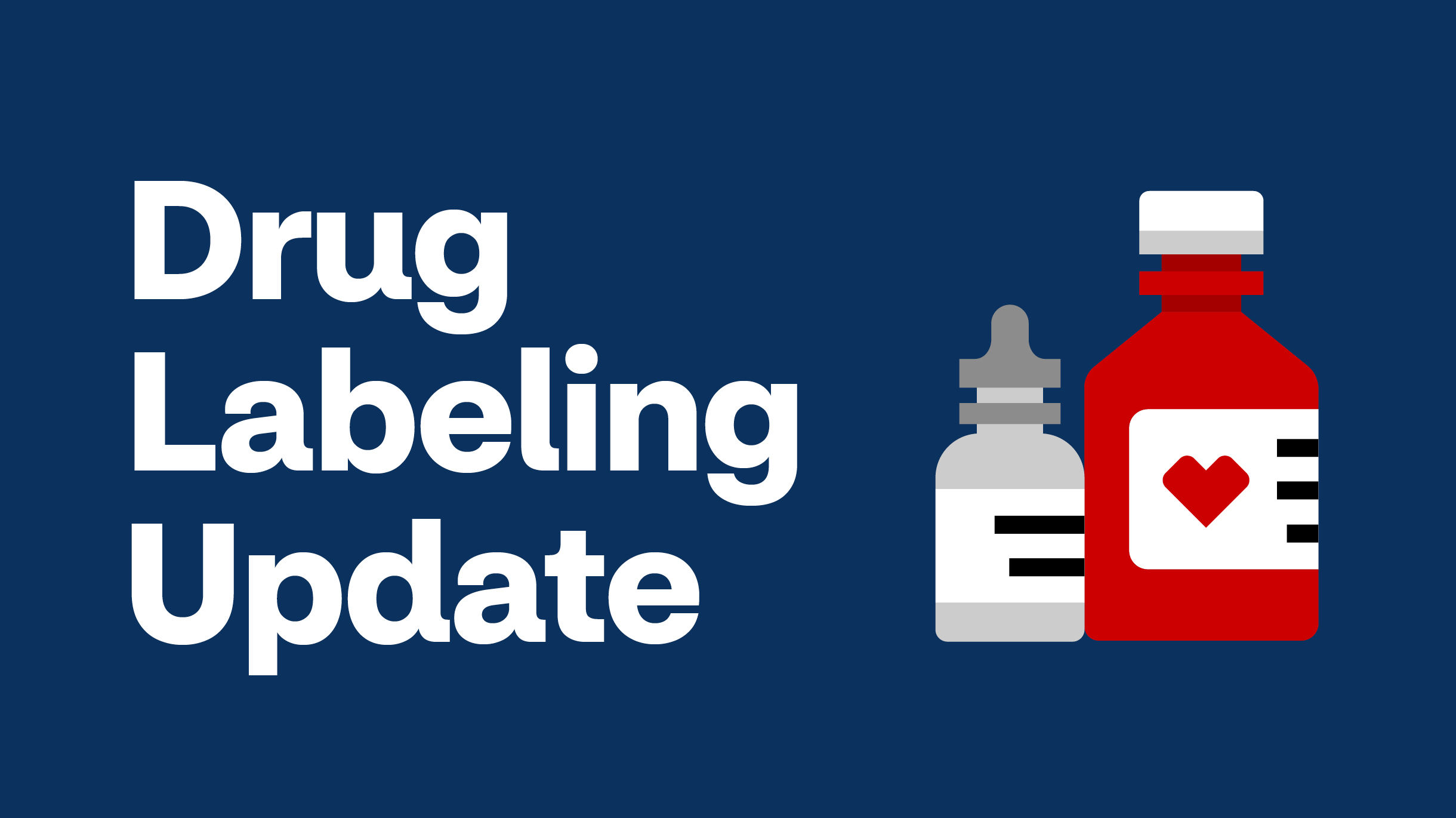
ENTYVIO (VEDOLIZUMAB) The Drug Interactions section of the Approved Drug Label was updated. The newly included information states that the formation of CYP450 enzymes may be suppressed by increased levels of certain cytokines (e.g., IL-6, IL-10, TNFa, IFN) during chronic inflammation. Therefore, use of ENTYVIO may normalize the formation of CYP450 enzymes by modulating the underlying disease. Upon initiation or discontinuation of ENTYVIO in patients treated with CYP450 substrates, monitor drug concentrations or other therapeutic parameters, and adjust the dosage of the CYP substrate as needed. Additional study data was included regarding the use in pregnancy.
INTRALIPID 30% (LIPID INJECTABLE EMULSION) The Patient Counseling Information was updated extensively to include clinical decompensation with rapid infusion in neonates and infants, parenteral nutrition-associated liver disease and other hepatobilliary disorders, hypersensivity reactions, infections, fat overload syndrome, refeeding syndrome, hypertriglyceridemia, aluminum toxicity, and preparation and administration instructions.
LEVETIRACETAM IN SODIUM CHLORIDE (LEVETIRACETAM) The Warnings and Precautions section of the Approved Drug Label was updated to detail Drug Reaction with Eosinophilia and Systemic Symptoms (DRESS) Multiorgan Hypersensitivity. DRESS typically, although not exclusively, presents with fever, rash, lymphadenopathy, and/or facial swelling, in association with other organ system involvement, such as hepatitis, nephritis, hematological abnormalities, myocarditis, or myositis, sometimes resembling an acute viral infection. These events can be fatal or life-threatening, particularly if diagnosis and treatment do not occur as early as possible.
XOLAIR (OMALIZUMAB) Minor clarifications were made throughout the Warnings and Precautions section of the Approved Drug Label. The Pediatric Use section was updated to detail use in IgE-Mediated Food Allergy and study data for patients aged 1 year and older. Of note, the safety and effectiveness in pediatric patients with IgE-mediated food allergy below 1 year of age have not been established. A new section was added regarding potential medication error related to emergency treatment of anaphylaxis. This section details that XOLAIR should not be used for the emergency treatment of allergic reactions, including anaphylaxis. These updates were also included throughout the medication guide and patient counseling information.
Reference: Drug Safety-related Labeling Changes (SrLC) (fda.gov)
This article contains references to brand-name prescription drugs that are trademarks or registered trademarks of pharmaceutical manufacturers not affiliated with Coram.
